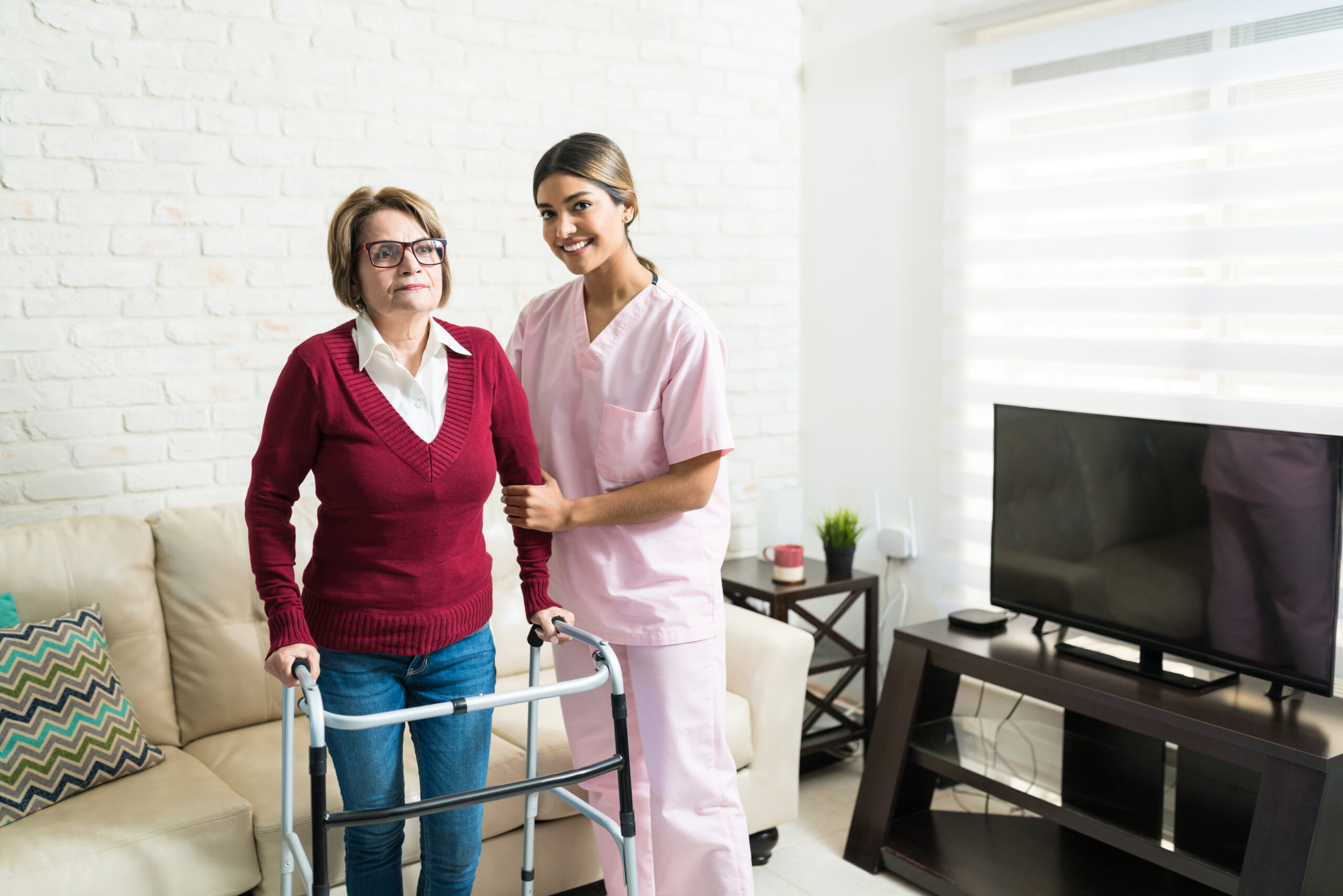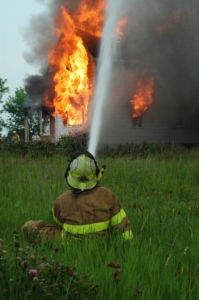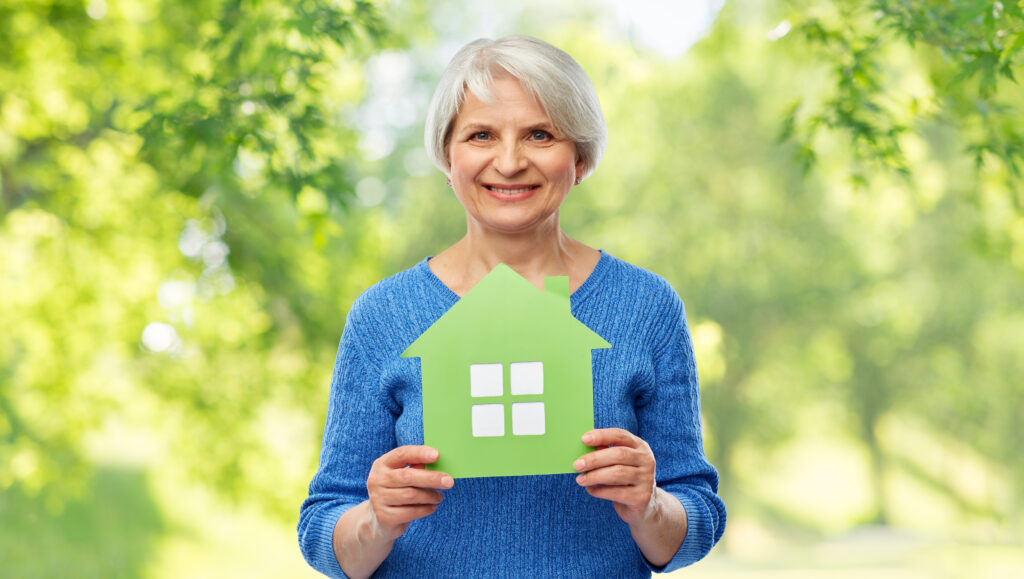
Whether you’re caring for a loved one full-time or just beginning your caregiving journey, there’s one thing we can all agree on: setting up a safe haven is a must 🏠
“Creating a safe environment is fundamental to supporting the independence and wellbeing of the elderly in their homes.” – Dr. Sarah Lee, Geriatric Specialist
Welcome, new caregivers! .A secure and supportive home environment can significantly enhance the quality of life and independence of the elderly folks we care so much about. At Your Nurse Advocate Consulting, LLC, our mission is to make this process less overwhelming and more manageable. So, grab a cup of coffee (or tea!), sit back, and let’s navigate through some essential tips together!
In this guide, we’ll provide practical advice and access to a systematic checklist to help you identify potential safety hazards and create a nurturing space for your loved ones.
This month stay tuned for a series of blog posts on “Supporting New Caregivers” We will cover such topics as Creating a Safe Home Environment, Identifying the Needs of Your Aging Loved One, Finding Resources, Getting their Affairs in Order, and Finding and Managing Caregivers.
Understanding the Unique Needs of Your Loved One
“Understanding and addressing the unique needs of the elderly in their living spaces is vital in preventing accidents and promoting a high quality of life.” – James Wright, Home Safety Advocate
Every individual has unique needs, especially as they age. Understanding these needs is the first step towards creating a safe and comfortable home. Consider their mobility, cognitive abilities, and any chronic conditions they may have. Customizing the home environment to meet these specific requirements will ensure their safety and well-being.
- .First things first, let’s talk about **Fall Prevention!** Falls are one of the most common and serious risks for elderly individuals, making this topic top priority. Clear those cluttered walkways, remove or secure loose rugs, and make sure there’s adequate lighting in all areas – especially pathways that will be frequented at night. Install grab bars in the bathroom and handrails on staircases to provide extra support. You can even get creative with it: think slip-resistant mats and non-slip socks. And don’t forget – regular vision check-ups can make a world of difference in preventing falls. Remember, creating a trip-free zone is the first step in making your loved ones feel more secure at home.
Linda and I have both had very recent experience with the traumatic and serious consequences of a fall. My mother-in-law passed away this past spring related to a fall down a flight of stairs. Linda just had her new client (we hadn’t even gotten as far as getting plans in place) and he fell and is not expected to make it from the results of a head trauma with a brain bleed from the fall. Same as my mother-in-law. If your loved one has repeated falls consider yourself lucky something serious hasn’t happened.
There are such things as accidents and we can’t prevent them all but we can do our best to be prepared such as having a life alert or lifeline so your aging loved one can push a button or talk into their neck pendant and ask for help. Some units even have fall detection and if that goes off someone will try and talk to you if you don’t answer then the ambulance will be on the way. If you are not sure how to go about getting a “life alert” please reach out and we can assist.
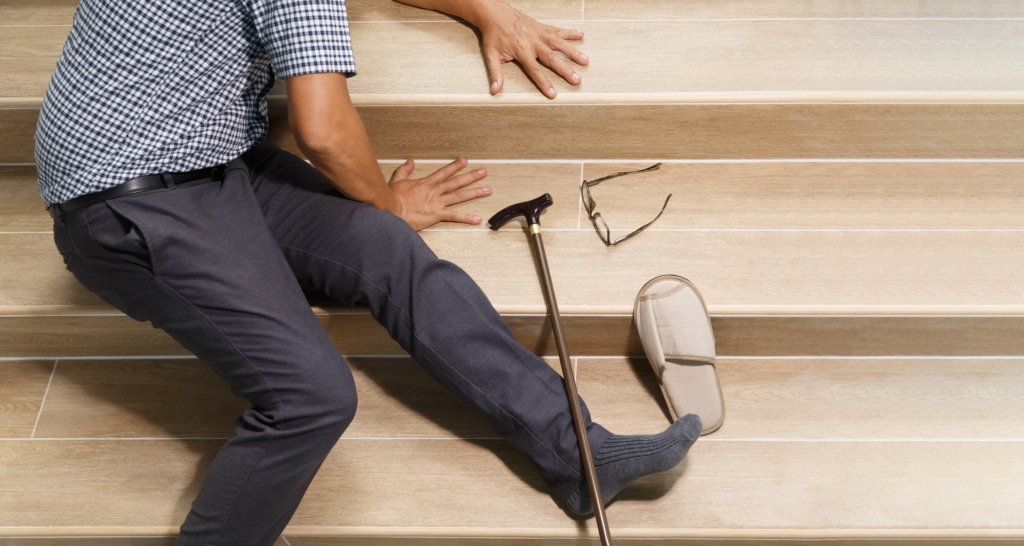
A Comprehensive Checklist for Identifying Safety Hazards
To make things easier, we’ve compiled a comprehensive checklist—our 11 signs—to help you identify and address potential safety hazards in your home.
Sign 1: Tripping Hazards
- Remove clutter and secure loose rugs.
- Ensure pathways are clear of furniture and cables.
Sign 2: Bathroom Safety
- Install non-slip mats and grab bars.
- Consider a shower chair and a raised toilet seat.
Sign 3: Proper Lighting
- Increase lighting in dim areas.
- Use nightlights in hallways and bathrooms.
Sign 4: Secure Stairs and Ramps
- Install handrails on both sides of stairs.
- Ensure ramps have non-slip surfaces.
Sign 5: Kitchen Safety
- Store sharp objects and hazardous materials securely.
- Label and organize cabinets for easy access.
Sign 6: Medication Storage and Access
- Use a medication organizer.
- Store medications in a safe but accessible place.
Sign 7: Fire and Electrical Safety
- Install smoke detectors and carbon monoxide alarms.
- Use surge protectors and avoid overloading outlets.
Sign 8: Home Security
- Install door alarms and motion-sensor lights.
- Ensure doors and windows are secure.
Sign 9: Mobility Aids and Accessibility
- Provide mobility aids like walkers or canes if needed.
- Ensure the home is wheelchair accessible if necessary.
We have a couple of free guides to help in this department.
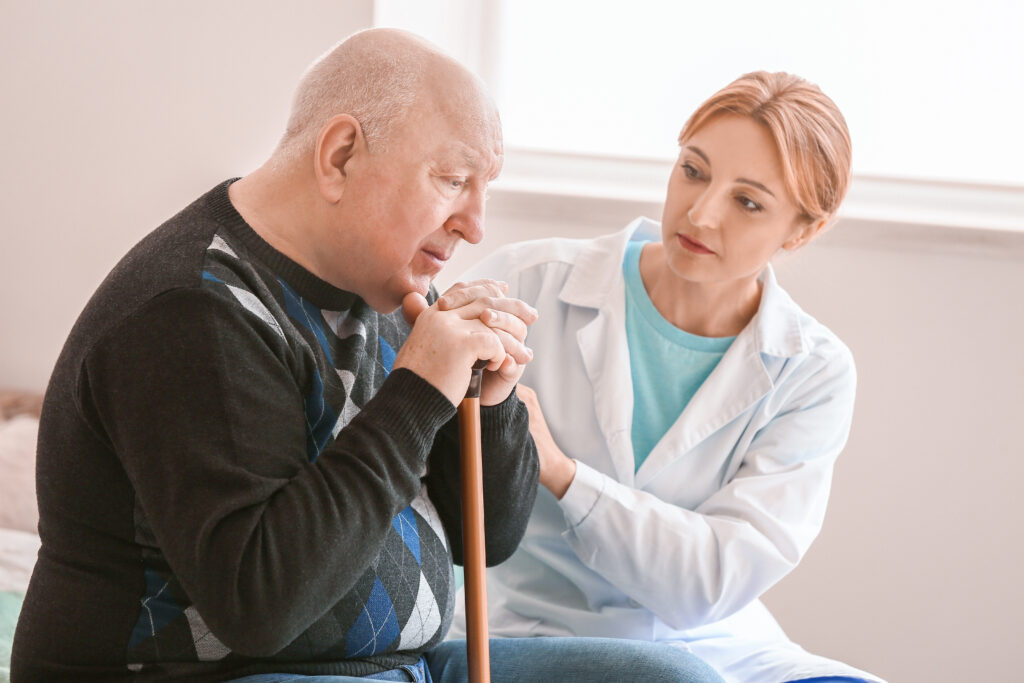
- Let’s now shift focus to **Medical Preparedness.** Keeping medical supplies and emergency information readily accessible can save precious time when it counts the most. Have a well-stocked first-aid kit, complete with essentials like bandages, antiseptics, and a thermometer. Make sure your loved one’s medications are organized and up-to-date. A medication dispenser can be a huge help in maintaining a proper schedule. Also, keep a list of important phone numbers (think doctors, pharmacies, and family members) in an easily accessible spot. Pro tip: having a written care plan can assist other family members or caregivers who may step in, providing a seamless transition of care.
- Let’s dive into **Emotional Safety and Mental Well-Being.** A safe home shouldn’t just protect from physical harm – it should also nurture emotional and psychological health. Create a comforting and welcoming space by incorporating familiar items like photos, favorite books, or cherished memorabilia. Maintain open communication and listen to their concerns and preferences.
Social interaction is crucial, so encourage visits from friends and family, or introduce them to virtual means of staying connected if distance is an issue. Simple activities, such as gardening, puzzles, or light exercise, can keep their spirits high and minds engaged. Remember, a home filled with love, warmth, and understanding is the best kind of safe haven.
Here we have a video on “Avoiding Senior Isolation” and how to support their mental health.
- Lastly, let’s take a brief look at “Medication Safety”. As a new caregiver your first task is to determine if there are any concerns with medication management or safety. Use your detective skills to determine if your aging loved one is taking their medications daily or as prescribed. Are they missing any days? How do they keep their medications organized?
Are their medications with half-full bottles but the refill date is long past? Are theyhaving any trouble swallowing their pills? What might be an explanation for not taking their medications properly? Do you have a current up to date medication list?

Medication Management
Proper medication management is essential to prevent misuse, overuse, or missed doses, which can have serious health consequences.
Practical Tips:
- Detailed Medication Schedule:
Create a comprehensive schedule to track doses and ensure compliance.
- Pill Organizers:
Use organizers or apps to manage multiple medications easily.
- Regular Reviews:
Review medications with healthcare professionals to confirm necessity and correct usage.
Actionable Steps:
- Create a detailed medication schedule.
- Utilize pill organizers or medication apps.
- Regularly review medications with a healthcare professional.
- Keep a list of medications, dosages, and instructions readily available.
Implementing the Changes: Practical Steps for a Safe Haven in the Bathroom
Home Modifications-
Modifying the home to accommodate the needs of an aging loved one can greatly enhance their safety and independence. We have included a video for you on home bathroom modifications for elder care safety. Anna is an interior designer that specializes in bathroom remodeling. In addition, we had a great conversation on the pros and cons of walk-in tubs.
Practical Tips:
- Adequate Lighting:
Ensure well-lit areas, especially stairways and high-traffic zones.
- Install Handrails and Ramps:
Add handrails on stairs and ramps for easier access.
- Rearrange Items:
Keep commonly used items within easy reach to minimize the need for climbing or bending.
Actionable Steps:
- Assess and address lighting needs throughout the home.
- Install handrails on both sides of stairways.
- Adjust the layout of commonly used items for easier access.
- Consider installing lever handles on doors for ease of use.
Now that you’ve identified potential hazards, it’s time to implement the changes. Start with the most critical areas, like the bathroom and stairs, and gradually work through the rest of the home. Don’t hesitate to seek professional help if needed.
Gaining Knowledge and Skills
Equipping yourself with the necessary knowledge and skills is vital to providing effective care.
Practical Tips:
- Attend Support Groups:
Join caregiver support groups or seminars to learn best practices.
- Consult Healthcare Professionals:
Seek guidance from healthcare professionals for specific care needs.
- Stay Informed:
Keep updated on the latest caregiving technologies and resources.
Actionable Steps:
- Attend caregiver support groups or educational seminars.
- Consult healthcare professionals for guidance.
- Stay informed about new technologies and resources.
Balancing Caregiver Responsibilities
Managing the needs of your loved one while balancing your own responsibilities can be challenging. Here’s how to stay organized and seek support.
Practical Tips:
- Develop a Care Plan:
Create a realistic care plan and schedule that considers your availability.
- Seek Support:
Utilize help from family, friends, or professional caregivers for respite.
- Stay Organized:
Use to-do lists and calendar reminders for important tasks and appointments.
Actionable Steps:
- Develop a realistic care plan and schedule.
- Seek support from others when needed.
- Stay organized with to-do lists and calendar reminders.
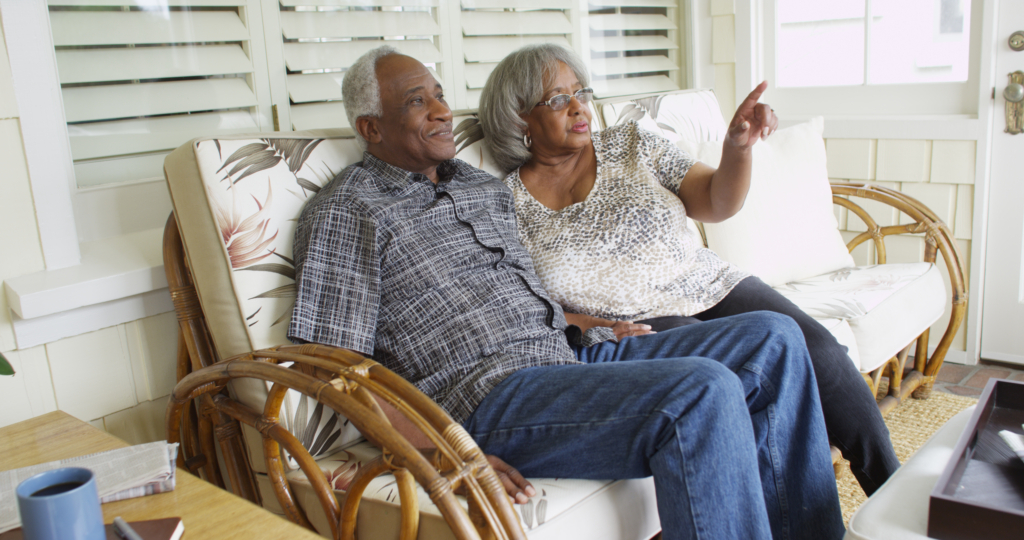
In conclusion, crafting a safe environment for the elderly involves attention to physical safety, medical readiness, and emotional health – it’s a holistic approach. At Your Nurse Advocate Consulting, LLC, we’re here to support you every step of the way. By following these guidelines and tailoring them to your specific needs, you can create a nurturing space that truly enhances your loved one’s quality of life ❤️. Stay tuned for more tips, tricks, and insights as we continue this caregiving journey together. You’ve got this, and we’ve got you!
“By identifying and mitigating potential hazards, caregivers can significantly reduce the risk of falls and other accidents, creating a safe and nurturing home environment for their loved ones.” – Maria Garcia, Senior Living Consultant
Feel free to share your own tips or stories in the comments below. Let’s build a supportive community where we can learn and grow together. 🌟
We are happy you stopped by to get some new knowledge for your role as caregiver. Please reach out for any questions or with any way we might be able to help.
Take care,
Pam and Linda
Your Nurse Advocates
“Compassionate care for aging adults with the peace of mind for the adult children.”
More Resources:
Essential First Tips for a New Caregiver Guide and Checklist
Your Nurse Advocate Free Resources
Caregiver Confidence Check Quiz; Where Do You Stand in the Caregiver Role?
Free Webinar “The 10 Steps You Must Know to Care for an Aging Loved One”

